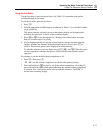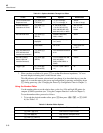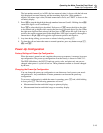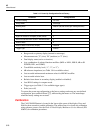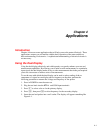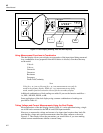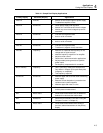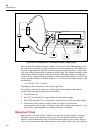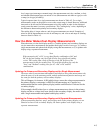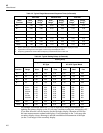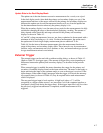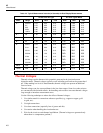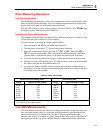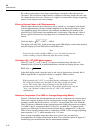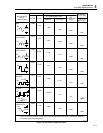
Applications
How the Meter Makes Dual Display Measurements
4
4-5
level, range type (autorange or manual range), the measurement rate (slow, medium, or fast),
and whether measurement types are mixed or not. (Measurements are either ac-type [ac volts
or amps] or dc-type [all others]).
Typical response times for a single measurement are shown in Table 4-2. For a single
measurement, results are displayed as soon as the correct range is found. However, additional
time needs to be allowed for the measurement to be fully settled in order for the displayed
result to meet the meter’s accuracy specifications. This "settling delay" varies, depending on
the differences between the primary and secondary displays.
The settling delay is longer when ac- and dc-type measurements are mixed. Examples of
mixed ac and dc measurements are volts dc and amps ac, and volts ac and amps dc. Settling
times are listed in Table 4-3.
How the Meter Makes Dual Display Measurements
When the meter is in the dual display mode (i.e., both the primary and secondary displays are
on), the meter takes measurements and updates the displays in one of two ways: (1) it takes a
single measurement and updates both displays using that measurement; or (2) it updates each
display using a separate measurement.
Note
When measuring AC + DC, (or any dual display combination of AC and
DC) in the fast reading rate, the Fluke 45 may show significant reading
errors. This results from a lack of filtering on the DC portion of the
measurement for the fast reading rate. To avoid this problem, use only the
"slow" and "medium" reading rates for AC + DC or AC and DC
combinations.
Updating the Primary and Secondary Displays with a Single Measurement
The meter takes a measurement and updates both displays using that measurement only
when the meter is in the autorange mode, and the measurement function and range are
the same for both the primary and secondary displays.
This will happen, for instance, if dB (which always causes the voltage measurement in
the primary display to autorange) or HOLD (with autoranging on) is applied to a
measurement function on the primary display and the same function is selected for the
secondary display.
If for example, the dB value of an ac voltage measurement were shown in the primary
display and the ac voltage itself were shown in the secondary display, the meter would
take a single measurement and update both displays with it.
Updating the Primary and Secondary Displays with Separate Measurements
If the measurement function, range, and ranging mode in the primary display are not
identical to those in the secondary display, the meter updates each display using a
separate measurement.



